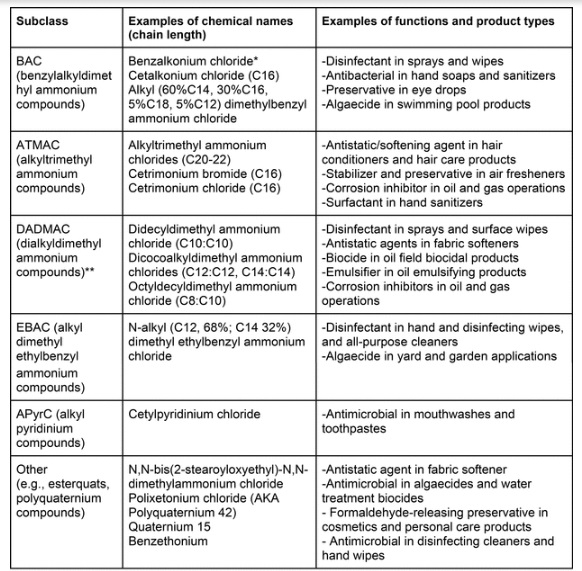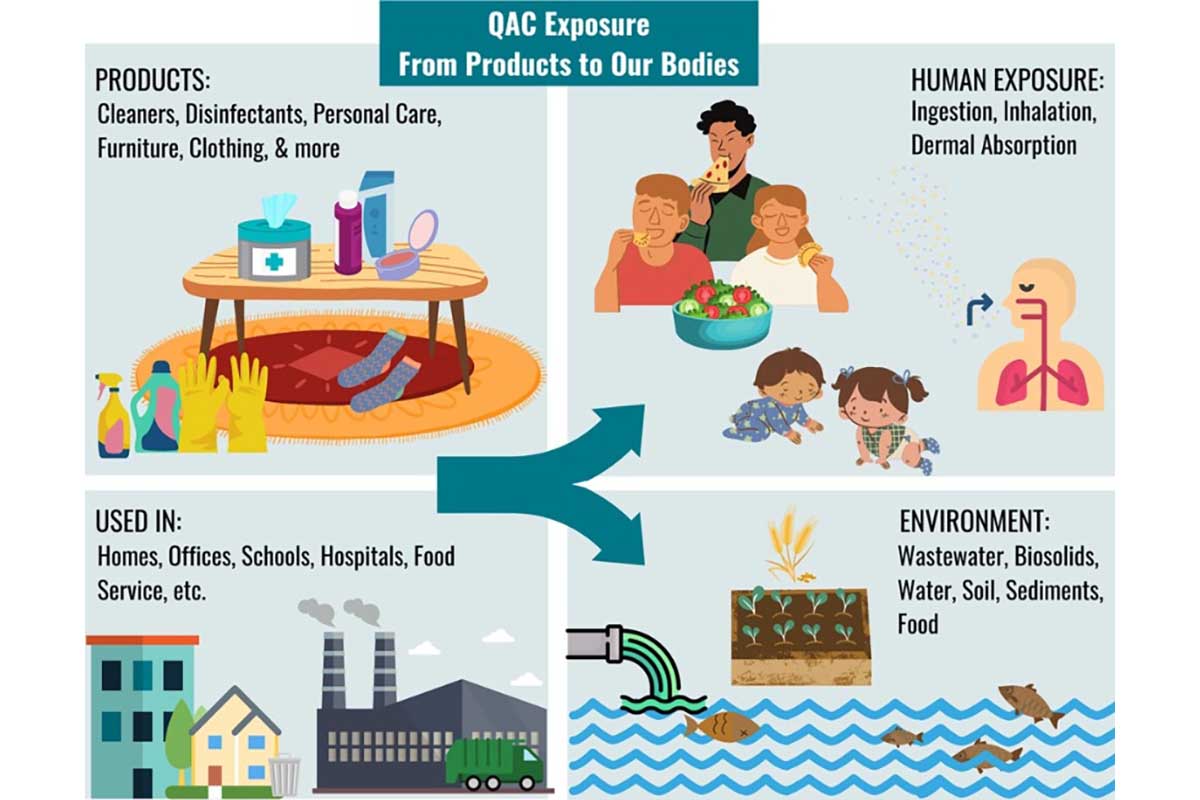A new study shows various criticalities of quaternary ammonium compounds (QAC), a class of substances particularly used in disinfectants during the pandemic (but not only). Given the overexposure there are possible problems for human health but also for the environment, also in some cases their effectiveness is doubtful
@Environmental Science & Technology
Unfortunately with Covid we have started to use much more often, and sometimes a little too lightly, disinfectants useful for sanitizing hands, houses, offices, schools, etc. The problem is that some of these products can be linked to health problems or environmental damage.
A new study has focused specifically on quaternary ammonium compounds (QAC), which include hundreds of chemicals and mixtures. Since after the pandemic, these have been increasingly marketed and used in the domestic, health, educational and work fields.
According to the experts however, a team of scientists who have published their research on Environmental Science & Technologyit would be better to choose safer and more reliable alternatives also in terms of effectiveness.
Their scientific review details how QACs are used as disinfectants almost everywhere and consequently the population is highly exposed. As stated Courtney Carignan, coautrice and assistant professor at the Michigan State University:
QAC-containing disinfectant wipes are often used on children’s school desks, hospital exam tables and in homes where they remain on these surfaces and in the air.
And then he adds:
Our review of the science suggests that disinfection with these chemicals is in many cases useless or even harmful. We recommend regular cleaning with soap and water and disinfection only when necessary with safer products.
The risks of using disinfectants that contain QAC
According to several studies conducted on humans, there would be associations between the use of these disinfectants and the appearance of:
- asma
- dermatitis
- inflammation
Studies on animals, on the other hand, raise further possible problems such as infertility, birth defects and more. There is also evidence pointing to the contribution of QACs to antibiotic resistance.
As noted by Erica Hartmann, co-author and professor at Northwestern University:
It is ironic that the chemicals we are employing in vain for one health crisis are actually fueling another. Antimicrobial resistance was already contributing to millions of deaths a year before the pandemic. Overzealous disinfection, especially with products containing QAC, threatens to make the situation worse.
Among other things, the QAC they perform many other functions in addition to the antimicrobial oneThese are surfactants, preservatives, antistatic agents, softeners and dispersants and consequently are not only found in disinfectants.
Where are the QACs located?
Quaternary ammonium compounds are found in different types of disinfectant solutions but also in other products. A non-exhaustive list follows:
- wipes
- hand gel
- spray
- nebulizers
- personal care products
- fabrics
- paints
- medical tools
Since the pandemic, however, precisely due to the increased use of disinfectants, the levels of these chemicals in the environment have grown significantly and consequently our exposure to them.
There is also an environmental problem concerning their use, given that they are polluting and toxic to animals.
Based on everything they analyzed, the scientists conclude:
Until we better understand the possible differences between the subgroups, it would be prudent to assume that all QACs could carry some level of risk. This is justified given the known impacts of AMR, biomonitoring data indicating its presence in humans, and recent data on adverse health outcomes. To effectively manage risks in a timely manner, the full class of QACs need to be addressed. For example, identifying and removing unnecessary uses of QACs, identifying existing safer alternatives for essential uses, and encouraging innovation of safer alternatives can prevent harm. We believe the research presented in this review supports such actions to preserve human and ecological health.
How to defend ourselves
One of the most commonly used QAC is the benzalkonium chloridebut others can also be easily identified on product labels with wordings ending in “ammonium chloride” similar ones.
If you pay attention from today, you will really find them in many products.

@Environmental Science & Technology
Follow your Telegram | Instagram | Facebook | TikTok | Youtube
Fonte: Environmental Science & Technology
Read also:
